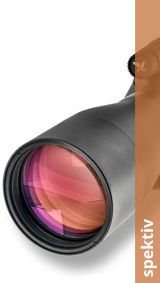Lenses of binoculars Is used via the LensWhen we talk about the objective lens of binoculars, we mean the front lens. The front lens is the foremost lens of the objective. " More info of binoculars, the front lens is meant. The front lens is the foremost LensThe use of aspherical lenses leads to a reduction in the overall length of the binoculars and in some cases to a significant reduction in weight. " More info of the lens. Lens diameterThe larger the lens diameter, the more light can be absorbed by the lens of the optical system. Glass purity plays a major role. " More info Formally speaking, a lens is a lens system. An objective lens is therefore often meant when talking about a lens. The objective lens of binoculars collects the light over a larger area than the EyeThe retina of our eyes has two different types of sensory cells or receptors, the cones (for day vision) and the rods (for night vision). " More info can. This makes the binoculars [...]
Category Archives: Wiki
PrismsLenses have the property of imaging objects upside down and laterally inverted - therefore the image must be rotated again. " More info and prism types in binoculars Lenses have the property of displaying objects upside down and laterally inverted - therefore the image must be rotated again. The image created in this way is first straightened up again by the prisms and displayed upside down. Either so-called porro prisms or roof prisms are used for this purpose. Porro prisms give the entire binoculars their characteristic angled shape, while roof prisms give the binoculars a slim design. Binocular prisms [...]
Mini binoculars - small for every pocket Pocket binoculars are often referred to as mini binoculars or mini binoculars. pocketPocket binoculars, often referred to as mini binoculars or pocket binoculars, are usually binoculars of the smallest design. " More info Binoculars are usually binoculars of the smallest design. Ideally, they are foldable binoculars that have a slim roof edge shape. Binoculars DDoptics EDX 10x30 Fieldstar Binoculars for the handbag should be packed in a bag for weight reasons. Lens diameterThe larger the lens diameter, the more light can be absorbed by the lens of the optical system. Glass purity plays a major role. " More info of approx. 25mm and ideally with a magnification of 8x or up to a maximum of 10x (watch out for shaking) [...].
The PorroBinoculars with porro prisms are the real universal binoculars, are inexpensive and offer brighter images with higher contrast. " More info Binoculars - Binoculars with porro prisms Binoculars with porro prisms are the true universal binoculars. The typically larger Lens diameterThe larger the lens diameter, the more light can be absorbed by the lens of the optical system. Glass purity plays a major role. " More info (35mm or more), usually in combination with an 8x magnification or even 10x EnlargementThe magnification of a binocular model is perhaps the most misunderstood feature. High magnification can be useful! " More infooffer brighter images with higher contrast. For this reason, optics with Porro prisms are ideal as: Binoculars for sporting events Marine binoculars Optics for long-range wildlife observation and hunting or [...]
Roof-edge binoculars or binoculars with Roof prismsThe main difference between the roof edge and the Porro system is the roof edge, where one of the reflective surfaces resembles a house roof (see picture below). " More info In the field of professional binoculars, such as hunting binoculars, you often (unfortunately) only find roof-edged binoculars. The essential DifferenceDifference and comparison between Porro prisms and roof prisms The design of binoculars is always determined by the type of prism used. Porro prism in binoculars Binoculars with a porro prism design can be recognised by their relatively low height and wide design. Advantage: The greater distance between the two lenses promotes spatial vision. A graphic illustration and further details on the design of porro prisms can be found here! Roof prism with " More info The roof edge of the Porro system is where one of the reflective surfaces resembles the roof of a house (see image below). These roof edge binoculars contain objectives with at least 35mm objective lens diameter and are designed for advanced applications, e.g. for professional wildlife and nature observation even in unfavourable lighting conditions [...].
Image field curvatureThe image produced by a lens objective has a spherical error by nature. This error can be corrected using appropriate optical elements. " More info or aberration in optics The image produced by a lens objective has a spherical aberration by nature. This is known as image field curvature or aberration. Depending on the quality of the binoculars, this results in a more or less pronounced blurring of the image towards the edge. Flattener LensesThe use of aspherical lenses leads to a reduction in the overall length of the binoculars and in some cases to a significant reduction in weight. " More info for error correction This error can be corrected by appropriate optical elements - one then speaks of a [...]
Advantages of the riflescope illuminated reticle with Luminous point IIUnfortunately, fine details such as the light unit are often skimped on. And this has far-reaching consequences! Not so with DDoptics. " More info The Light pointThe choice of reticle and the associated mode of operation of the illuminated dot is of decisive importance when purchasing. " More info II was developed by DDoptics in Dresden. This new generation illuminated dot II is installed exclusively and in all optical sights offered by DDoptics. New: The optional, intelligent additional control IFiberA state-of-the-art position and movement sensor registers every movement and the position of the optics. A controller interprets this data so that the illuminated dot is there when you need it. " More info from DDoptics. DDoptics illuminated dot 2 Unfortunately, fine details such as the light unit are often skimped on. And this has far-reaching consequences! Not so with DDoptics. The illuminated dot II [...]
The different types of DDoptics binoculars Binoculars can be divided into two main types according to their basic construction: Construction with Roof edgeThe main difference between the roof edge and the Porro system is the roof edge, where one of the reflective surfaces resembles a house roof (see picture below). " More info prism (various construction forms) or with Porro PrismBinoculars with porro prisms are the real universal binoculars, are inexpensive and offer brighter images with higher contrast. " More info. Binoculars PrismsLenses have the property of imaging objects upside down and laterally inverted - therefore the image must be rotated again. " More info Systems Both designs have their unique advantages and disadvantages. In principle, Porro and roof edge binoculars can be used depending on the Glass typesIn addition to the coating of optics, the glass quality or type of glass is one of the most important quality factors for binoculars and riflescopes " More info (BAK 4, Crown glassThe different types of DDoptics binoculars Binoculars can be divided into two main types according to their basic construction: Construction with roof prism (different types of construction) or with Porro prism. Both designs have their unique advantages and disadvantages. In principle, Porro and roof prism binoculars can offer the same performance depending on the type of glass (BAK 4, crown glass, etc.), the amount of coating required and the manufacturing quality. The details decide whether they are good binoculars or not. " More infoetc.), remuneration expense and production quality offer the same performance. The details [...]
Different ReticleDifferent reticles for riflescopes. DDoptics uses the following 3 reticles for its riflescopes, depending on the target optics: " More info for riflescopes DDoptics uses the following 3 reticles for its riflescopes, depending on the target optics: Reticle 4 with Light pointThe choice of reticle and the associated mode of operation of the illuminated dot is of decisive importance when purchasing. " More info from DDoptics reticle 4 ILU with Luminous point IIUnfortunately, fine details such as the light unit are often skimped on. And this has far-reaching consequences! Not so with DDoptics. " More info or IFiber Most hunters who choose a reticle with illuminated dot opt for this reticle 4. The illuminated dot is switched on in the dark. A light source shines through the built-in Glass fibreA state-of-the-art position and movement sensor registers every movement and the position of the optics. A controller interprets this data so that the illuminated dot is there when you need it. " More info. Fine [...]
How to recognise the quality of the illuminated reticle on riflescopes! The choice of reticle and the associated function of the illuminated dot is of crucial importance when making a purchase. At this point, we would like to give you some tips on what you should pay attention to when choosing the reticle and the illuminated dot and why! 1. is the Light pointThe choice of reticle and the associated mode of operation of the illuminated dot is of decisive importance when purchasing. " More info really infinitely dimmable by 100%? Or is [...]
Explanation and function of the parallax compensation A shooter does not look "straight" but "diagonally" through the EyepieceThe eyepiece is the lens group of an optical system that faces the eye. The eyepieces consist of several separate lenses - achromats (3-6 individual lenses). " More infoa target error occurs - the so-called ParallaxIf a shooter does not look "straight" but "diagonally" through the telescopic sight eyepiece, an aiming error occurs - the so-called parallax. " More info. Parallax error in riflescopes The reason for this is the positioning of the eye outside the straight line that runs from the reticle centre to the target - the optical axis and visual axis are shifted against each other. This subsequently leads to incorrect [...]
The ReticleDifferent reticles for riflescopes. DDoptics uses the following 3 reticles for its riflescopes, depending on the target optics: " More info in the 1st image planeWhen the reticle is in the 1st focal plane, the reticle simply enlarges with the magnification adjustment. " More info for riflescopes When the reticle is in the 1st focal plane, the reticle simply enlarges with the magnification adjustment. The image of the object created in the 1st image plane is magnified in the second image planeThe reticle in the 2nd focal plane does not simply magnify when looking through the optical sight. " More info shown. This means that the bar spacing remains the same. Advantage: Easily recognisable bars in the reticle. However, as these - especially at high MagnificationThe magnification of a binocular model is perhaps the most misunderstood feature. High magnification can be useful! " More info [...]


















